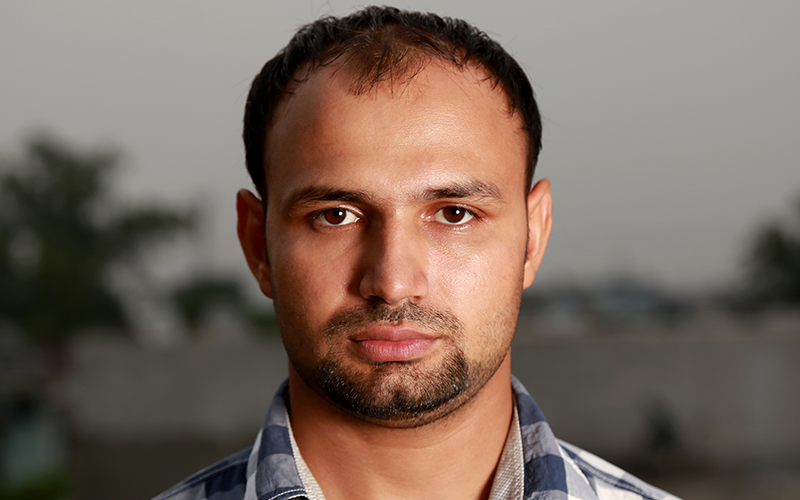
If you’re in your 20s and your hairline is already beginning to recede, it’s most likely the early stages of male pattern baldness. But don’t panic. You aren’t alone! Male pattern baldness is the most common cause of hair loss and almost 25% of men start seeing symptoms in their 20s.
The bad news is that male pattern baldness is a genetic condition. There is nothing you did to cause it. It’s in your genes. Your family history also affects the age when you begin to lose your hair, how fast you lose hair and, ultimately, the extent of your baldness.
The good news is there have been extensive medical advancements to slow, stop and even reverse the progression of hair loss in some men. So, if you notice your hair falling out or the early stages of a receding hairline, what should you do?
What causes male pattern baldness?
A hereditary condition, male pattern baldness or female pattern baldness — also called androgenetic alopecia — is the most common cause of hair loss in men. It occurs gradually in a very predictable pattern. For men, it is a receding hairline and for women, it’s typically characterized by thinning hair all over the scalp.
What makes male pattern baldness unique is its progression of receding or thinning hair at the front of the hairline, temples and crown. The condition then advances until only a rim of hair remains. In some cases, it eventually leads to total baldness.
Male pattern baldness is generally triggered by the male hormone dihydrotestosterone (DHT), which is a byproduct of testosterone. Some men have hair follicles that are genetically sensitive to DHT. After continued exposure, the hair follicles shrink and stop producing hair normally.
The temples and crown are the areas of the scalp most sensitive to DHT and are where the most hair loss occurs. The Norwood Scale is used to measure how far male pattern baldness has progressed and includes seven stages. Stage One is a baseline of no hair loss, and Stage Seven describes extensive baldness with only a strip of hair remaining at the back and sides of the scalp.
What can you do about male pattern baldness?
If you intervene early enough, you can slow — or even stop — DHT exposure to your hair follicles and halt the progression of male pattern baldness. The key, however, is early intervention.
If you notice your hairline is receding, the first step is to get an accurate diagnosis from your doctor. A general physician or medical hair loss expert can assess your hair loss pattern, scalp, and medical and family history to determine if your hair loss is due to male pattern baldness or some other condition. If your hair loss is due to male pattern baldness, there are several treatment options available.
NeoGraft is a minimally-invasive, nonsurgical hair restoration method that uses follicular unit extraction (FUE) technology to regrow your natural hair without surgery or scalpels, so there is no scarring.
NeoGraft uses gentle pneumatic pressure to extract individual hair follicles from the donor area and then transplant them to areas of the scalp where you want more hair. The procedure is quick, virtually painless and only requires a local anesthetic.
After the procedure, your scalp recognizes the transplanted follicles as familiar cells and encourages your own hair to grow naturally. Most people see a fuller head of healthy hair in as little as four to six months, and the results are permanent.
Because the hair that grows from the implanted follicles is your very own hair, results look natural, and you can cut and style your hair as you would normally.
Earlier treatment options for hair loss include Finasteride, the generic name for Propecia®, which was approved in 1997 by the FDA to treat male pattern baldness. Propecia inhibits type II 5-alpha-reductase, the enzyme that converts testosterone into DHT, and requires a prescription. Taken daily, the drug can lower DHT levels by as much as 60%, which can, in turn, stop the progression of hair loss.
Another drug, Minoxidil, which is the active ingredient in Rogaine®, was the first FDA-approved drug to treat male pattern baldness and is effective in promoting hair growth in both men and women. When applied topically to the scalp, minoxidil effectively slows the progression of hair loss by fighting DHT, and it also regrows some hair. It does not, however, stop the actual hormonal process of hair loss.
To work effectively, both Propecia and Minoxidil have to be used indefinitely to retain the benefits.
Other hair loss treatments include traditional hair transplants, which involve surgically removing an area of the scalp with healthy hair follicles — typically from the back of the head — and transplanting it to an area where hair is thinning.
Unlike NeoGraft, this process often causes linear scarring where the scalp is joined back together at the donor site.
Male pattern baldness can lead to feelings of frustration and self-consciousness and even depression and social isolation. If hair loss is negatively affecting your quality of life or self-esteem, contact our hair restoration experts at Dallas NeoGraft today to learn about your treatment options and take the first step toward restoring your hair and your confidence.



